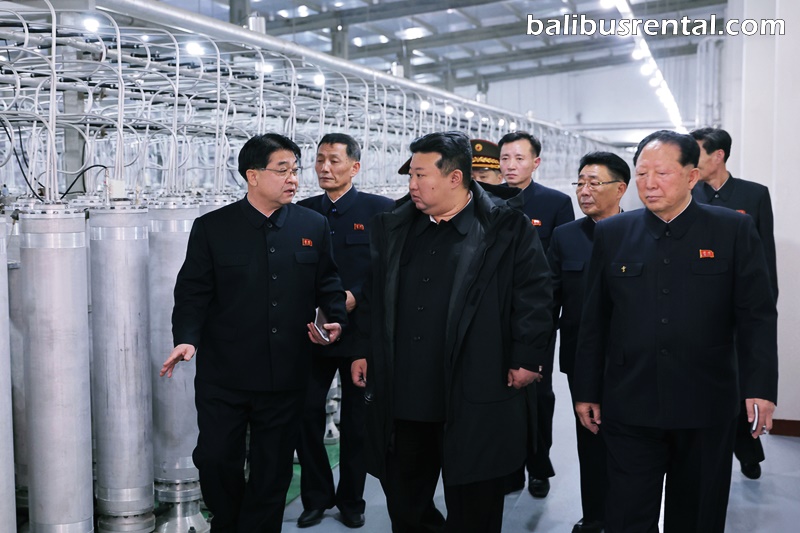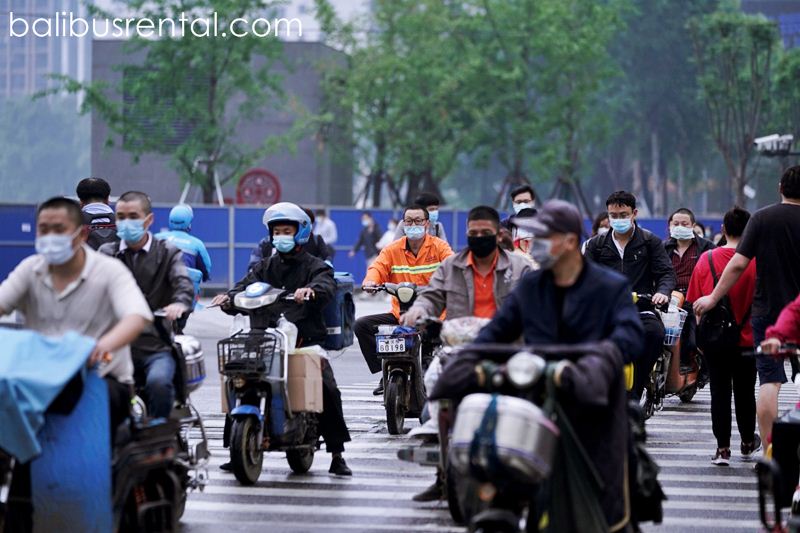Wednesday | June 25, 2025
Seoul, South Korea — As American B-2 stealth bombers roared over Iranian skies, striking key facilities believed to be linked to Tehran’s nuclear program, the reverberations were felt far beyond the Middle East. Thousands of kilometers away, in East Asia, policymakers, military strategists, and regional analysts immediately began grappling with a critical question: What message does this unprecedented show of force send to North Korea — a state whose nuclear arsenal is significantly more developed than Iran’s?
While the Biden administration has framed the strikes as a targeted response to prevent nuclear proliferation in the Middle East, many experts warn that the operation could unintentionally embolden Pyongyang. Rather than being intimidated, North Korea may view the strikes as further proof of what it has long believed: that nuclear weapons are the ultimate insurance policy against U.S.-led regime change.
“President Trump’s strike on Iran’s nuclear facilities will undoubtedly further reinforce the legitimacy of North Korea’s longstanding policy of regime survival and nuclear weapons development,” said Lim Eul-chul, a professor of North Korean studies at South Korea’s Kyungnam University. “North Korea perceives the recent US airstrike as a preemptive military threat and will likely accelerate efforts to enhance its own capability for preemptive nuclear missile attacks.”
For years, Washington has struggled to contain North Korea’s weapons program through a mix of diplomacy, sanctions, and military deterrence. Despite multiple summits and negotiations — including high-profile meetings between Kim Jong Un and former U.S. President Donald Trump — the regime has refused to denuclearize. Intelligence estimates suggest North Korea now possesses dozens of nuclear warheads, along with a growing arsenal of intercontinental ballistic missiles (ICBMs) capable of striking the U.S. mainland.
What makes the current moment even more volatile, analysts say, is North Korea’s deepening alliance with Russia — a partnership that has rapidly matured since Moscow’s invasion of Ukraine in 2022. With both countries isolated by Western sanctions and hostile toward Washington, they have found common ground in strategic cooperation that now appears to extend well beyond rhetoric.
Since the formal establishment of their strategic partnership in 2024, North Korea and Russia have dramatically ramped up military and economic collaboration. According to Lim, “Based on the strategic alliance between North Korea and Russia, Pyongyang is likely to move toward joint weapons development, combined military exercises, technology transfers, and greater mutual dependence in both economic and military terms.”
Evidence of this alignment is mounting. A recent report by the Multilateral Sanctions Monitoring Team (MSMT) — an initiative comprising 11 United Nations member states — revealed that North Korea has sent over 14,000 military personnel and millions of rounds of ammunition, including missiles and rockets, to support Russia’s war efforts in Ukraine.
In exchange, Pyongyang has reportedly received a wide array of sophisticated Russian military equipment and technology. These include surface-to-air missile systems, advanced electronic warfare tools, anti-aircraft missiles, and significant quantities of refined oil — resources that North Korea desperately needs amid its paralyzed economy and fuel shortages.
“Such exchanges are not just transactional,” the MSMT report noted. “They provide North Korea with the material resources to fund its prohibited weapons programs, enhance its ballistic missile capabilities, and, perhaps most dangerously, gain firsthand experience in modern, high-intensity warfare.”
The timing of the U.S. strikes in Iran only adds urgency to the concerns. As regional tensions flare, and North Korea finds itself increasingly emboldened and equipped, experts warn that the window for diplomacy may be narrowing.
“Pyongyang will likely use the Iran strikes to justify both its nuclear posture and its growing closeness with Moscow,” said Lee Seong-hyon, a former South Korean presidential adviser. “This is a dangerous cycle — one where the U.S. response to one nuclear threat might be accelerating another.”
For Washington and its allies in the region — especially South Korea and Japan — the challenge ahead may be less about containing North Korea’s existing arsenal, and more about preventing the emergence of a new, more dangerous axis of nuclear-armed authoritarian powers.
Iraq, Libya, Iran and the lessons of US-led intervention
In the eyes of North Korean leader Kim Jong Un, the recent U.S. airstrikes on Iranian nuclear facilities may appear to confirm a long-held and deeply cynical worldview: that nations without nuclear weapons remain vulnerable to American military intervention. From Iraq and Libya to Iran, regimes that lacked nuclear deterrence have either been overthrown or bombarded — a pattern that analysts say is not lost on Pyongyang.
“Kim sees a troubling logic at work,” said Victor Cha, Korea Chair at the Center for Strategic and International Studies (CSIS). “Countries that don’t have nuclear weapons get attacked. Countries that do, don’t.”
North Korea has tested six nuclear devices since 2006 and has invested heavily in developing a credible nuclear deterrent, including long-range missiles capable of reaching the U.S. mainland. For the regime in Pyongyang, its arsenal is not a bargaining chip — it’s existential.
According to Cha, Washington’s decision to use force against Iran will likely leave a profound and lasting impression on the Kim regime. “The strikes on Iran will only reaffirm two things for North Korea, neither of which play well for U.S. policy,” he said. “One: the U.S. does not have a use-of-force option for North Korea’s nuclear program like they had in Israel for Iran. Two: the strike only reaffirms in Kim Jong Un’s mind his conviction to pursue and maintain a nuclear arsenal.”
The contrast between Iran and North Korea’s nuclear capabilities is stark — and deeply significant. While Iran has long flirted with the potential of developing nuclear weapons, it has yet to produce a deliverable nuclear device. According to the International Atomic Energy Agency’s most recent assessments, Iran’s uranium enrichment had not yet reached weapons-grade levels, and the country had remained engaged in sporadic but ongoing diplomatic talks with the U.S. and European powers.
Yet despite diplomacy being “on the table,” former U.S. President Donald Trump ordered B-2 stealth bombers to drop precision-guided “bunker busting” bombs on Iranian nuclear sites — an action many observers see as a turning point in the long-running standoff over Tehran’s nuclear program.
For North Korea, the implications are clear — and potentially dangerous.
“Pyongyang’s nuclear program is much more advanced, with weapons possibly ready to launch on multiple delivery systems, including ICBMs,” said Leif-Eric Easley, a professor of international security at Ewha Womans University in Seoul. “The Kim regime can threaten the U.S. homeland, and Seoul is within range of many North Korean weapons of various types.”
Easley pointed out that unlike Iran, which lacks both a deliverable nuclear warhead and the missiles to reach the U.S., North Korea already has both — and has demonstrated them through repeated tests. This makes any military option against the Kim regime vastly more complicated, risky, and potentially catastrophic.
In Washington, the strikes on Iran were intended as a signal — a demonstration of resolve and deterrence. But in Pyongyang, they may be interpreted as confirmation that diplomacy offers little protection, and only nuclear weapons can ensure a regime’s survival.
“This is the paradox of U.S. policy,” said Cha. “By striking Iran, the U.S. may have made it even harder to achieve its long-standing goal of denuclearization on the Korean Peninsula.”
As tensions rise in multiple regions, the long shadow of nuclear deterrence continues to shape how authoritarian regimes like North Korea view their place in a volatile international order — and how far they’re willing to go to protect it.
A matrix of deterrents
North Korea is estimated to possess between 40 and 50 nuclear warheads, along with a diverse array of delivery systems capable of striking not only neighboring countries but also potentially reaching the continental United States. This formidable arsenal, developed over decades in defiance of international sanctions and condemnation, forms the cornerstone of the Kim regime’s survival strategy.
“An attack on North Korea could provoke the risk of full-scale nuclear war,” warned Lim Eul-chul, a professor of North Korean studies at Kyungnam University in South Korea. “The stakes are fundamentally different from Iran.”
Beyond the immediate danger of escalation, Lim emphasized the legal and political complexities embedded in the U.S.-South Korea alliance. Under the terms of their mutual defense treaty, any U.S. military action against North Korea would require prior consultation and coordination with the South Korean government — a step that adds layers of diplomatic caution and potential domestic fallout.
“The U.S. cannot act unilaterally in Korea the way it just did in Iran,” Lim said. “There is a binding framework in place, and Seoul’s consent would be essential.”
Adding another dimension to this high-stakes equation is North Korea’s alliance with Russia. While Iran has no formal mutual defense arrangement with any major power, North Korea has maintained a longstanding security treaty with Moscow — one that theoretically obligates Russia to intervene militarily if Pyongyang is attacked.
“Unlike Iran, North Korea enjoys a formal mutual defense treaty with Russia, which allows Russia to automatically intervene in the event of an attack,” Lim underscored. In the context of Russia’s growing rivalry with the United States and its pivot toward authoritarian allies, that clause has taken on renewed strategic significance.
This complex matrix of deterrents — North Korea’s nuclear capabilities, the constraints of U.S. alliances in the region, and the potential for Russian military involvement — effectively shields Pyongyang from the kind of preemptive military strikes Washington carried out against Iran. The calculus in Northeast Asia is fundamentally different.
In the end, rather than deterring further nuclear development elsewhere, the Iran strike may inadvertently do the opposite.
“This attack will deepen North Korea’s distrust of the U.S.,” Lim said. “And it is expected to act as a catalyst for a shift in North Korea’s foreign policy, particularly by strengthening and deepening military cooperation with Russia.”
Analysts now fear that Pyongyang, already emboldened by recent weapons tests and diplomatic overtures from Moscow, may accelerate joint military initiatives with Russia — including co-development of missile and satellite technologies, increased arms transfers, and joint military exercises — all of which further destabilize an already volatile regional security landscape.
As the dust settles in Iran, the shockwaves are likely to be felt most intensely not in the Middle East, but on the Korean Peninsula — where a regime long conditioned to see threats around every corner may now feel more justified than ever in holding tightly to its nuclear deterrent.




